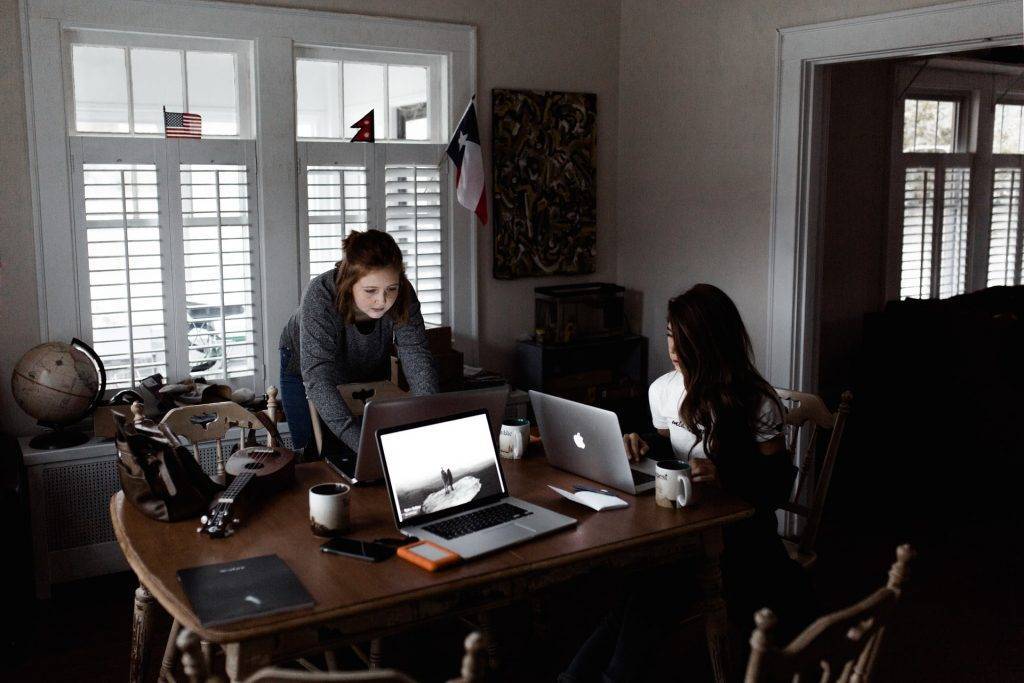Are you the owner of a large-scale company that has multiple locations, departments, and employees? If so, you may need to write an RFP for website design at some point.
An RFP with defined goals, decent organization, clear expectations, and a dash of personality will help you land the most suitable agency for your upcoming project. It will also boost your chances of making that project a great success.
Today’s post will cover how to write an RFP, particularly for a website design project.
Let’s get started:
Introduction To Website Design RFP

RFP stands for “Request For Proposal.” A website designing RFP is a business document that covers details regarding a website redesign project. Its objective is to get bids from web designing agencies, decide whether they’re a good fit, and offer a way to understand the compatibility and capabilities between both sides.
A high-quality website designing RFP:
- Will make project goals clear.
- Clarifies criteria for web designing agency selection.
- Offers a list of needed functionality.
- Sets expectations.
In an RFP Needed?
Although a well-planned RFP comes with a lot of advantages, it’s not worthwhile for all organizations. If you’re unsure what you’re looking to get from the redesign project, it’s worth the trouble to brainstorm it with a web development agency you trust. Such dialogue lets you bounce ideas back and forth, ensuring you’re more focused on the objectives rather than particular deliverables.
Think about the size and cost of the project. If you’re seeking a redesign amounting to only $2,000, then chances are, you don’t need an RFP. But if you have a big project where you need a lot of customized work, or need to get multiple bids, then an RFP is ideal for the web designing project.
What Makes A Good RFP for Your Website?
If you’re looking for a website, first, put together a web redesign request for a proposal. Sending your RFP over to several agencies is common practice and an excellent idea. It helps you get an idea of what it’ll require to turn your project and vision into reality. After the request is submitted, agencies respond with a solution covering the scope of work, cost, and timeline. Generally, this exchange consists of a short discussion on the phone and a question and answer session.
See your RFP as the first impression to your potential agency partners. Your RFP sets the stage. It should be clear, concise, and to the point. It doesn’t have to be technical. In fact, most of the top RFPs don’t tend to have code or jargon at all. If you’ve decided which integrations to use, then include them in the RFP email to vendors. If not, then let it be. It’s okay not to have all the answers. After all, that’s why you’re choosing to go with agency experts in the first place.
Remember — RFPs don’t need to be dry and mundane. We’re talking about your business here. There’s nothing wrong with making it fun. Make it simple, think through each section and keep it fun to read. In the end, you’re creating something new for your business, so you should be excited.
How To Write A Fantastic Web Design RFP: Top 10 Tips
Want to stand out from the crowd with your website design RFP? If so, you need to be more focused, self-aware, and direct than other unexciting RFPs in the potential vendors’ email inboxes.
The degree of excitement in the RFP is your call, but it’ll skyrocket if you carefully carry out the following:
Establish Goals For Your New Website
High-quality RFPs are authentic. Be straightforward and concise about the issues you and your users come across. Get laser-focused on what you want to get out of your new website. If possible, cut it down to 1 or 2 sentences, and expand from there. A great starting point is problem recognition.
See your new site as a catalyst for the business goals. Be frank about what it must accomplish and why the old version isn’t working. For example, you could say:
“Our main goal for the website is to boost engagement and user acquisition via design. Unlike the current site, the new website has to offer users a means to buy our products as effortlessly as possible. It must also be mobile-responsive.”
Or:
“Our number one focus is getting sales-ready leads for the sales team. Our second objective is to educate prospects about our services and offer useful resources.”
Or:
“Our first goal is to build credibility for potential investors. Secondly, we want to make it super easy to get in touch with team members via the website or social media handles.”
You get the idea. With such upfront demands, the service providers understand exactly what you’re looking to get done. Communicating the goals right in the beginning is an excellent way to boost your chances of success with the new site.
Keep Your Website RFP Concise
Creating an RFP shouldn’t be weeks of work. Believe it or not — people still send out RFPs that have 50 pages long. That’s way too long. So it’s important to be straightforward and concise. Don’t demand something you don’t need or can’t comprehend yourself.

The majority of companies start their new website design RFP by downloading a template from the Internet. It’s a good move, but make sure you understand it yourself and personalize it. Remember — asking service providers to offer a lot of information that you won’t use can waste time for everybody.
Mention The Budget For Your Website Project
Mention the whole budget for the project. Talking about your budget in advance will help eliminate agencies that don’t fit the bill. It also lets vendors convey how they can customize the services. Add a payment schedule and all the related info that helps describe the budget.
It may feel like you’re exposing too much by adding the project budget, but it’ll make the process smoother for you and the website design agency. Clients and agency service providers can be far off when it comes to pricing. If you’re looking for a $15,000 website and the agency vendor is thinking $150,000, it’s recommended to be upfront about it and part your ways.
The bottom line is: the RFP isn’t where you negotiate deals. It’s for communicating your exact needs and the exact budget you can allot for it, and adding a total budget and timeline filters out the solutions that aren’t tailored for you. That’ll let you focus on choosing the best strategic plan for the deal rather than the best price.
Speaking of price…
Pricing Isn’t Everything
Not all offers are created equal. If someone can offer something for a small price, chances are, they’re going to cut a lot of corners. So choosing the cheapest option isn’t always the wisest. Sure, you can nickel and dime the service provider. But don’t be surprised if the low-quality service starts to show in some time, requiring you to hire more people to fix it.
“Do it cheap, do it twice” and “You get what you pay for” are true words. No, I’m not telling you to choose the most expensive option. Price is just one piece of the whole puzzle. So see it like that.
Mention The Necessary Website Functionality
This is the meat of your RFP. Based on this part, the web designers and developers will determine what they’ll charge you. It would be best if you listed which functionalities are compulsory and which are optional. Thanks to this, the agency would be able to line-item optional requirements.
After that, you can make a more educated decision. For example, you could say:
“It’s a must to have a blog on our site to share updates. Optional feature: we’d like a complete resource center comprising a video library and advanced search functionality. ”
Your potential web design agency would have more questions about the list, but it’s an excellent way to drive their proposal in the right direction.
Don’t Decide Based Just On The Proposals You Get
When you’re sending a website proposal, you’re getting a partnership. It’s not only a product, it’s a relationship. So feel free to communicate with the providers during the process. Pick a vendor that’s reasonable, reliable, communicates well, shares your values, and will do business positively with you moving forward.
Make sure it’s a phased approach. Choose the most suited proposals and face them in round two. Their attitude over the phone or in person is more important than how they sound on paper.
Add Questions About The Potential Agencies In The RFP
Don’t just focus on the new web design and development. Ask questions regarding the firms you might be partnering with. Below are some that you can add to your proposal:
- What’s your work culture like?
- What are your strengths?
- What are your weaknesses?
- Which were your last three website projects?
- Do you outsource any of your work to other countries?
- How often do you check in with clients after the website launch?
- Can I see some employee testimonials on your company?
People don’t tend to list such questions in RFPs, but it’s recommended that you do because the answers will help you learn a ton about the potential agency partner.
Ask Your Web Vendors for References And Portfolio
Web design agencies can say nice things about themselves all day long. So ensure you ask for references and testimonials from clients who received new sites recently. Insights from past clients would help you more than the insights in the proposal.
Also, request the company to offer a portfolio of similar projects they’ve finished for reviewing. Make sure that all the websites don’t look designed the same, only with the images and text changed. It’ll help single out the companies that’ll invest the time to pinpoint the exact needs of your target audience and build a customized site that focuses on the user experience.
Remember — since the design is subjective, there’s no obligation to say you love everything they send. The top designers and developers can incorporate client specifics and user experience together.
Expect Questions In Your Proposals

If the agency didn’t ask any questions when submitting the proposal, it’s a red flag. Your partner agency should be serious and invested in diving deep and understanding your project.
Find a vendor that cares enough to ask questions to get to know the organization.
Timeline & Important Deadlines
It’s understandable if you’re not sure how long the project might take. But still, there can be a reasonable timeline to keep track of things. Will there be a hard deadline — because of a new product launch or something? Perhaps there’s a huge upcoming trade show, and the website needs to be up by then? Make sure you mention the concrete dates beyond the agency choosing process.
Remember — website completion time can be wide-ranging. Even the simplest of websites can take up to eight weeks of work. It may take time to understand and digest the company’s goals, values, and unique market propositions. In cases of complex websites, 6 to 9 months isn’t very uncommon. Discuss the timeline in advance, and your potential partners will be frank about its likelihood.
Why is this important? Because the agency needs to know whether it’s possible to complete the project within the deadline. Plus, responsible partners will help you understand whether the timeline is realistic or not. If the work scope and timeline don’t align, you and your partner can discuss whether there’s any flexibility and work on the top-priority items for launch.
Writing Kick-Ass RFPs Is Easy When You Know What To Add
There you are — the essential elements that make a decent RFP. Although it can look like a lot, there’s a great chance that you have done all of this when buying things in the past.
Of course, this list doesn’t cover everything. There might be other elements you can add, but rest assured, the features we’ve covered here, if used properly, will fill the recipients with joy, thanks to the thoroughness. It shows that you’re serious about the project and are investing time and effort to do business.
Again — the better your RFP, the better your vendor’s counter-proposal can be. All that said, now you’re ready to get started.

